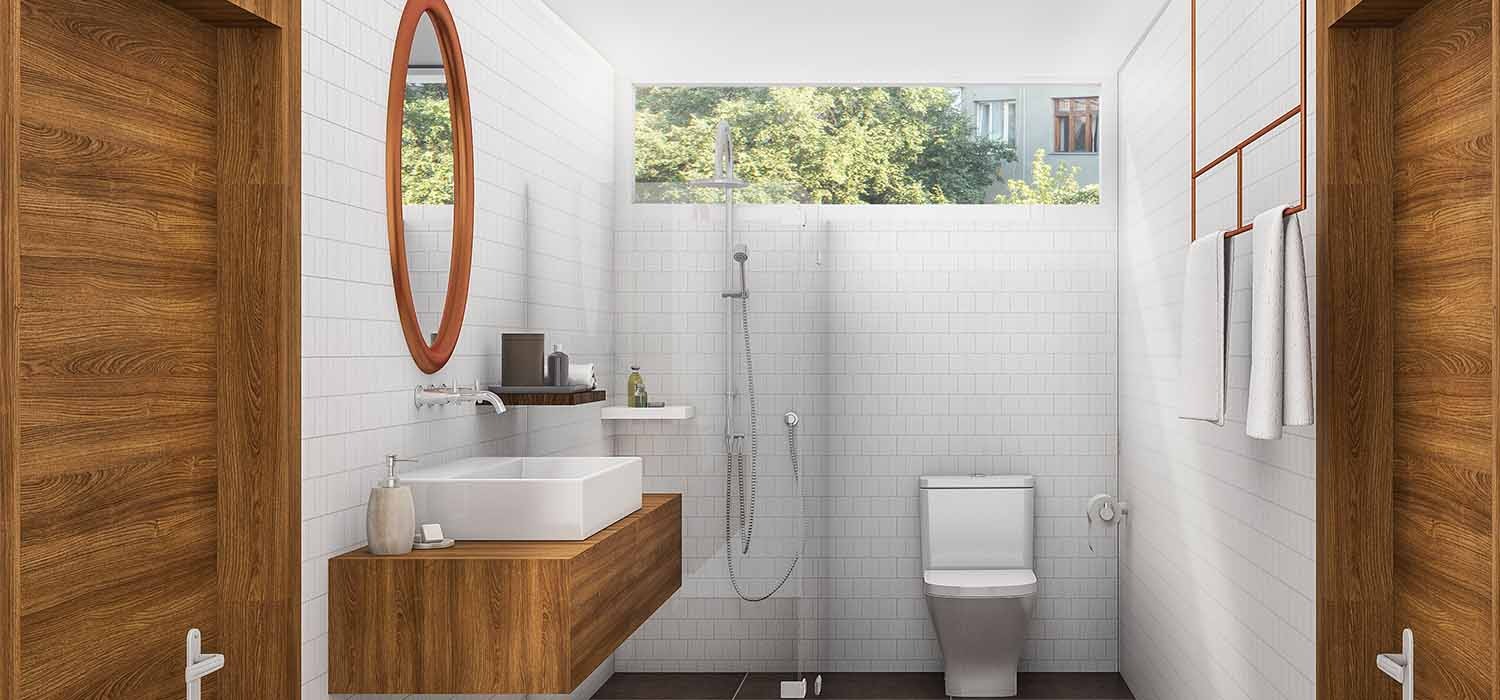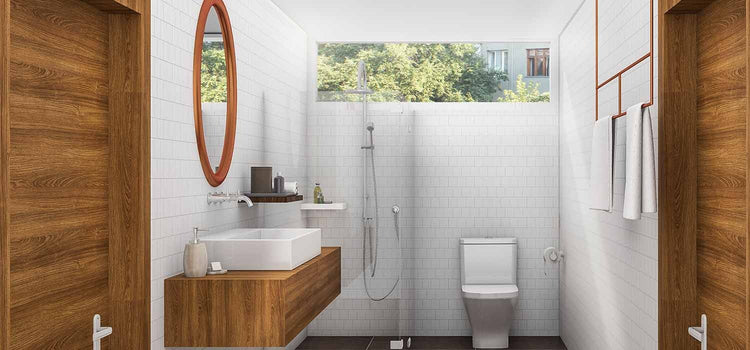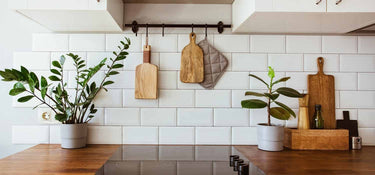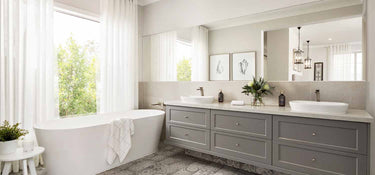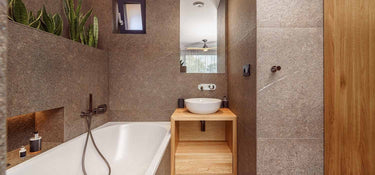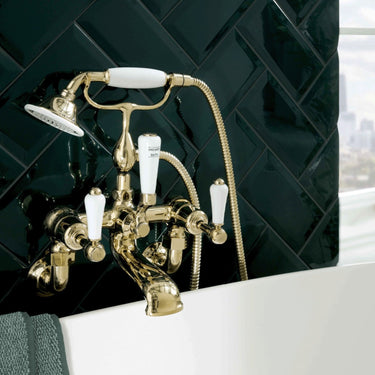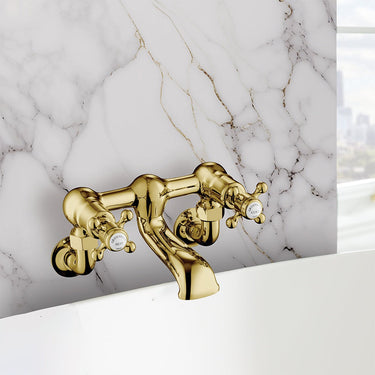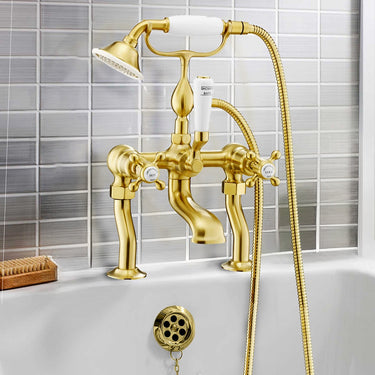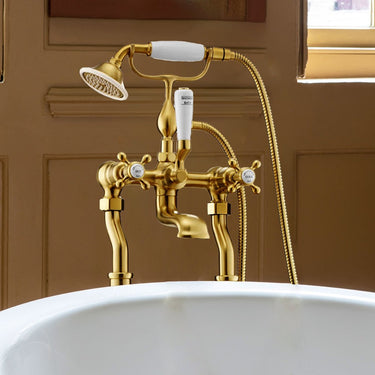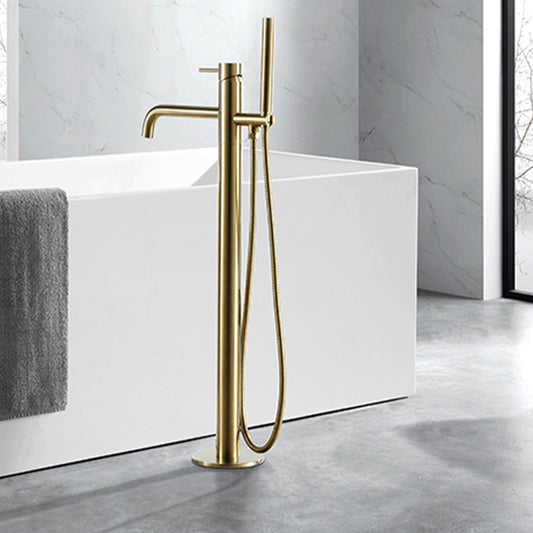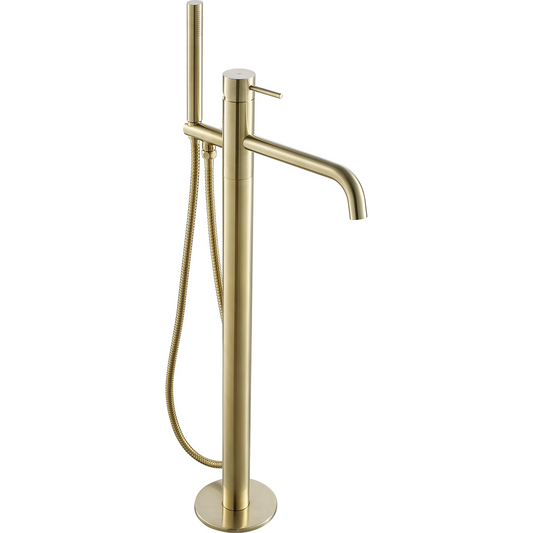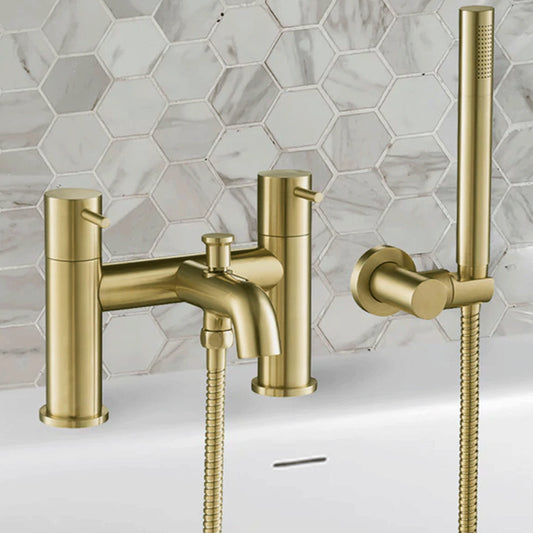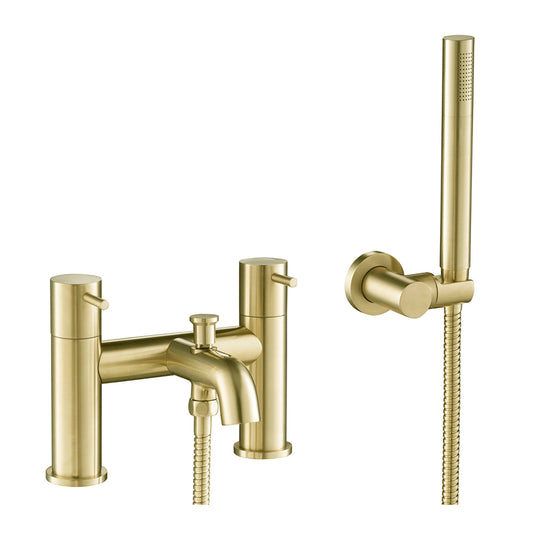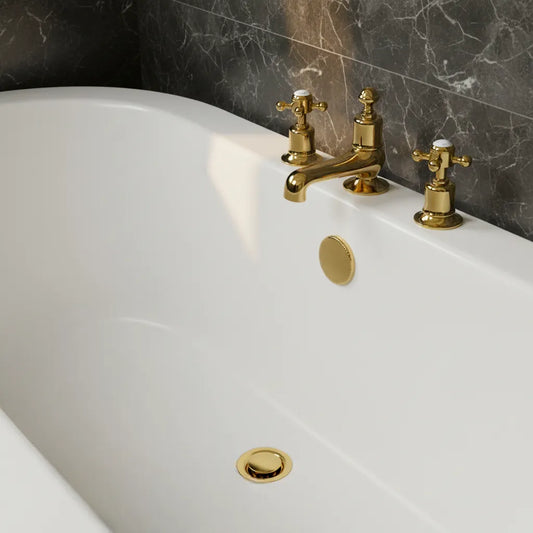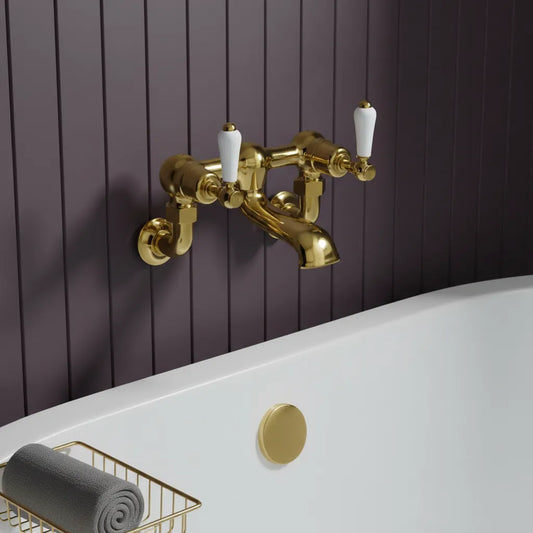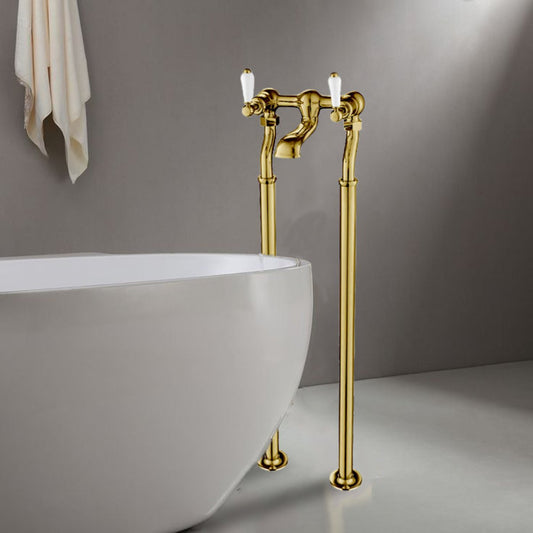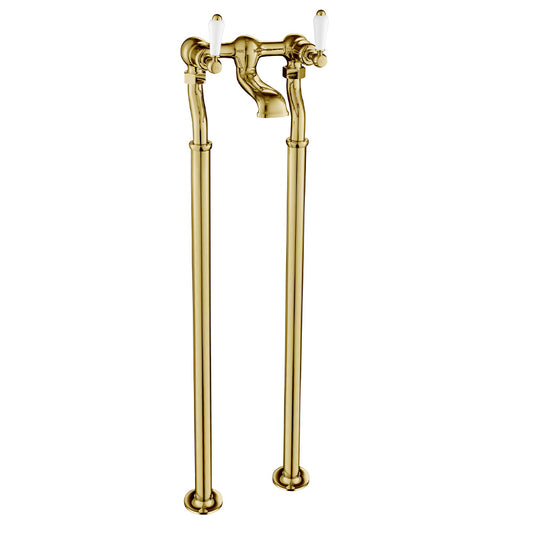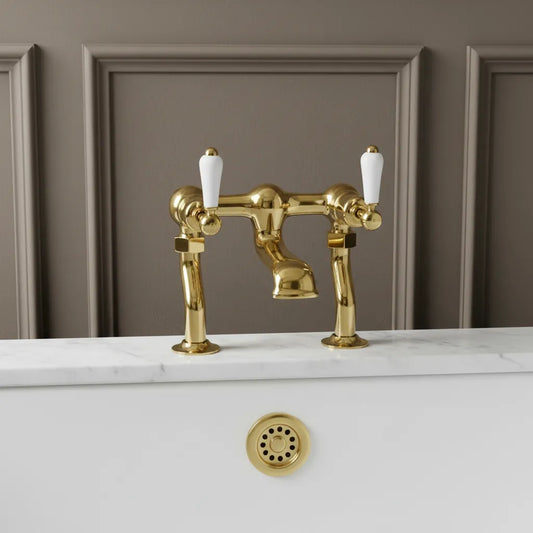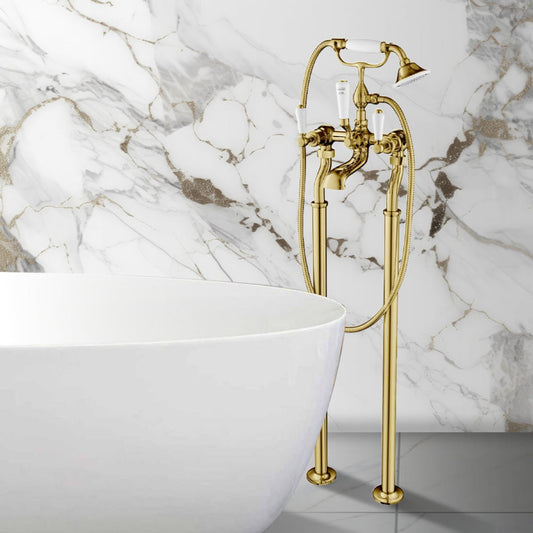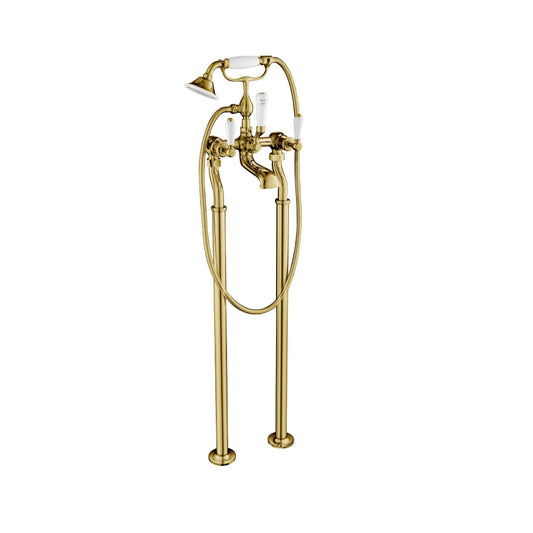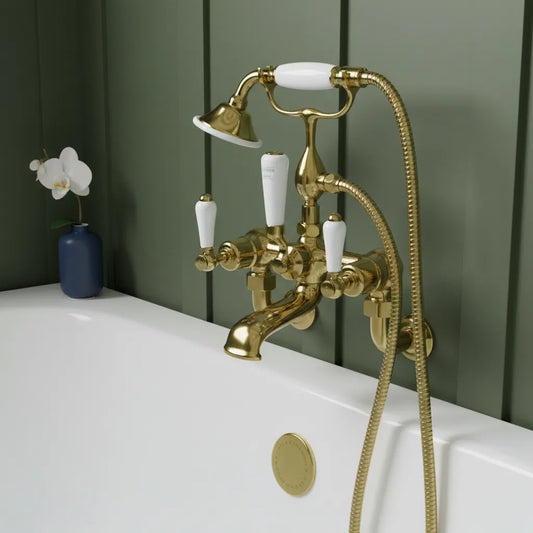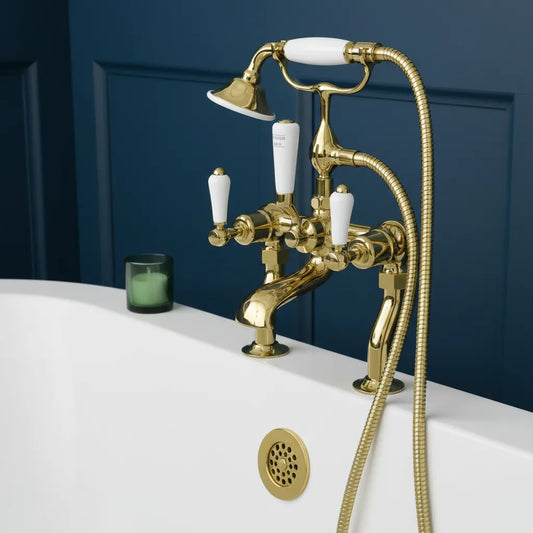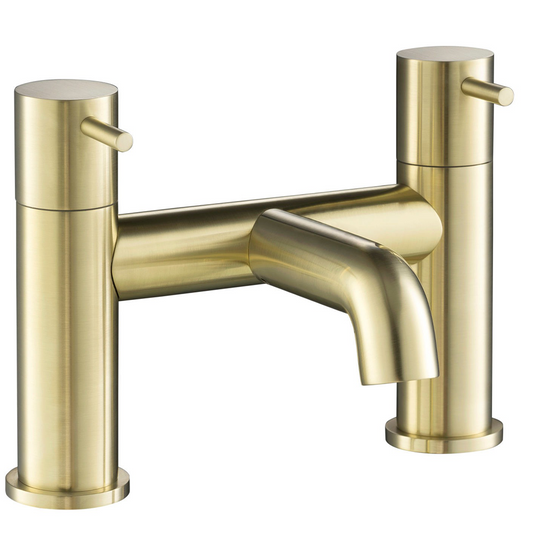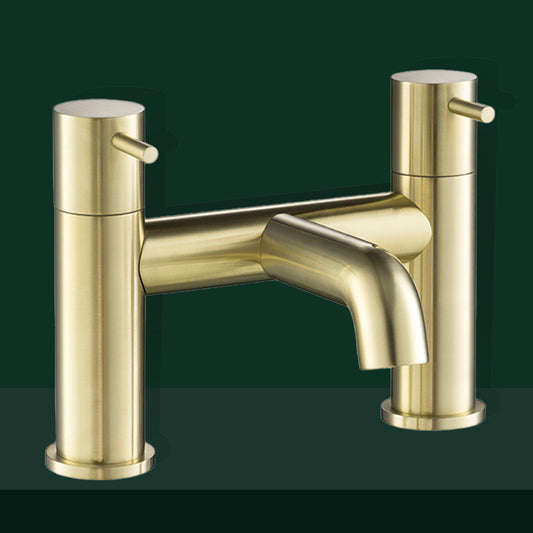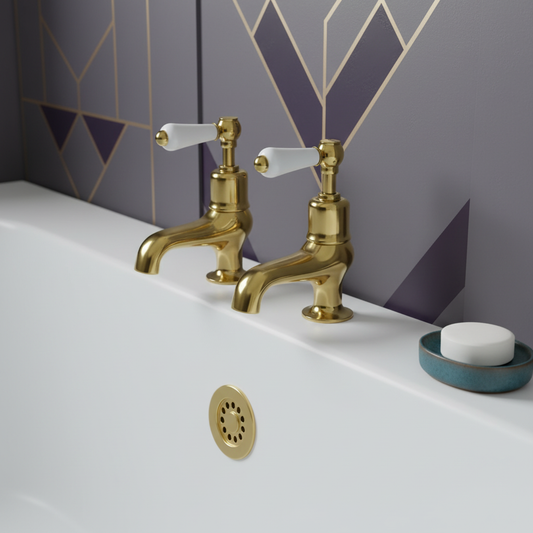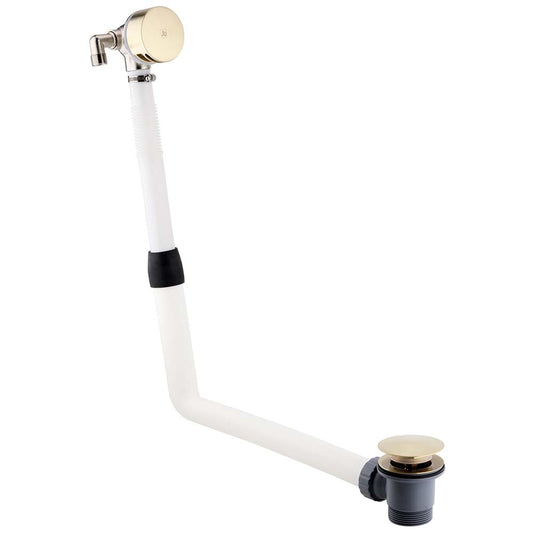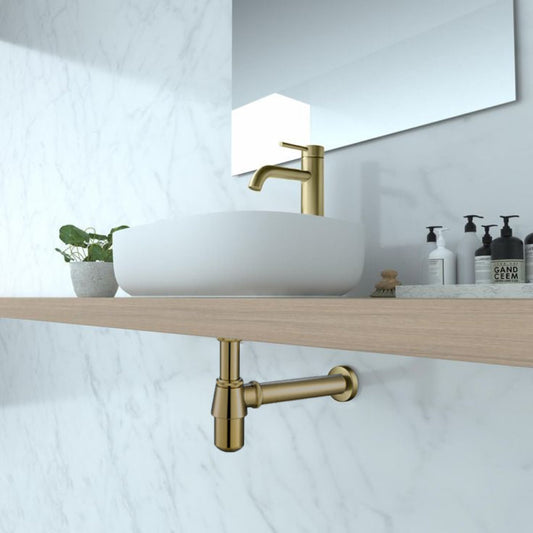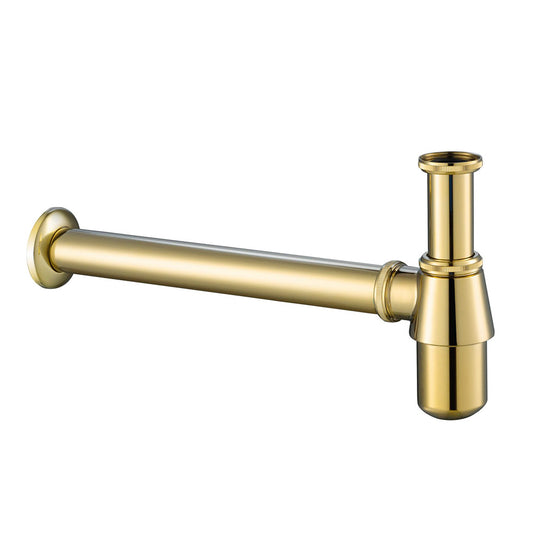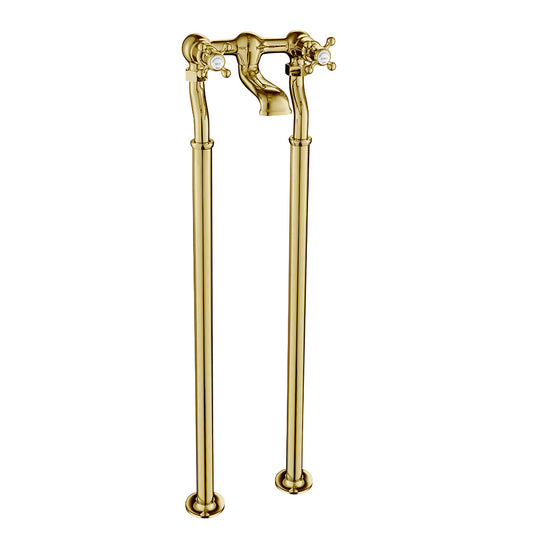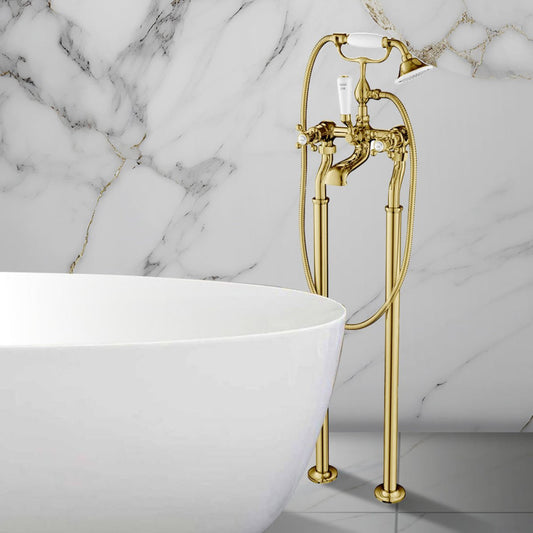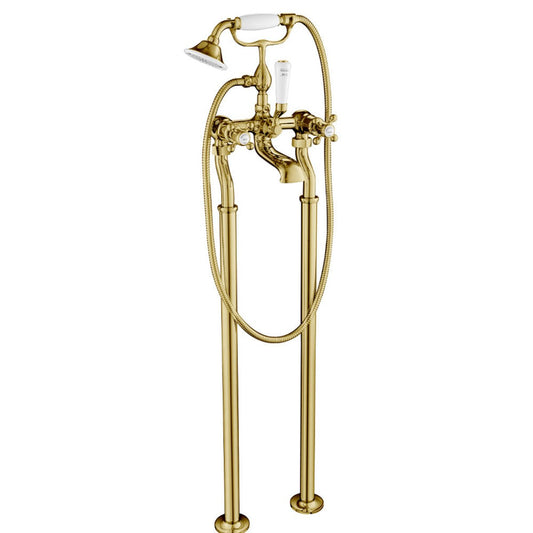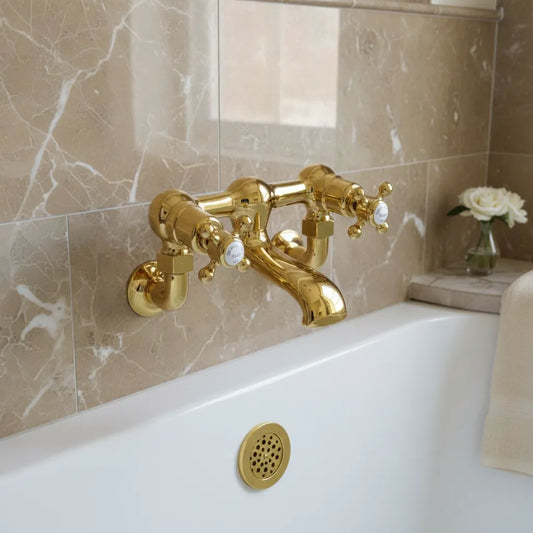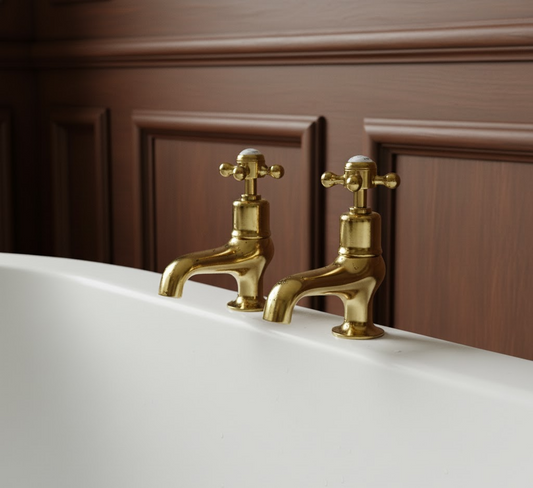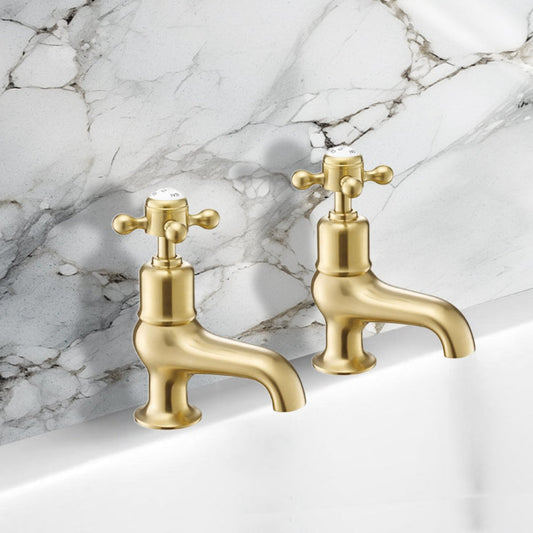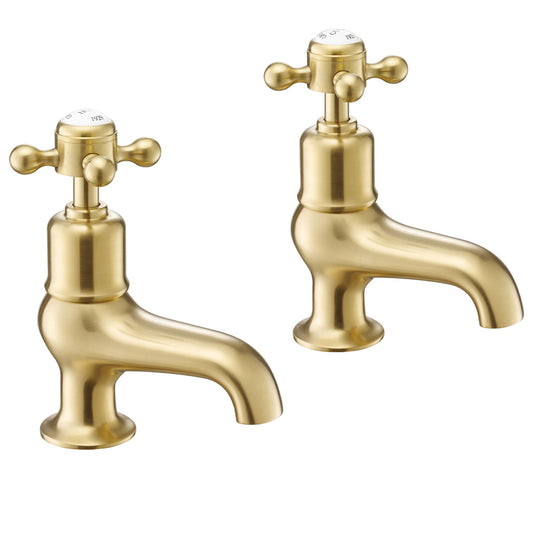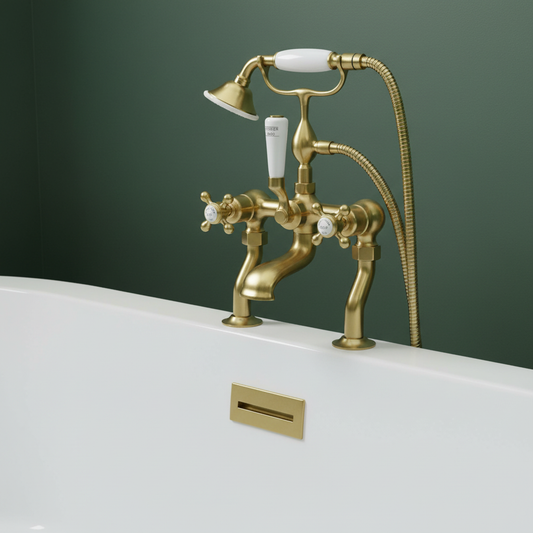The Ultimate Guide to Bathroom Tiles: Transform Your Space with Style and Functionality
Table Of Contents:
-
Introduction
→ -
Traditional Bath Taps Collection
→ -
Why Bathroom Tiles Matter
→ -
Choosing the Right Bathroom Tile Material
→ -
Tile Sizes and Shapes for Your Bathroom
→ -
Popular Bathroom Tile Designs
→ -
Tile Placement Tips for Your Bathroom
→ -
Caring for Your Bathroom Tiles
→ -
Bathroom Tile Costs in the UK
→ -
Why Tiles Are Essential in Your Bathroom?
→ -
Popular Sizes of Bathroom Tiles and Their Uses
→ -
How to Clean and Maintain Bathroom Tiles
→ -
Using the Same Tile for Bathroom Walls and Floors
→ -
Conclusion
→ -
Frequently Asked Questions
→
Introduction
Choosing the right bathroom tiles is crucial to creating a stylish, functional, and long-lasting bathroom. Tiles not only enhance the overall aesthetic of your bathroom, but they also play a key role in protecting your walls and floors from water damage, stains, and mold. With so many materials, designs, and colors to choose from, it can be overwhelming. In this comprehensive guide, we'll walk you through everything you need to know about bathroom tiles, from selecting the right materials to the latest design trends for both walls and floors.
1. Why Bathroom Tiles Matter
Bathroom tiles are more than just a design element—they offer practical benefits too. Bathrooms are high-moisture areas, and tiles are resistant to water, making them the ideal surface for protecting your walls and floors from damage. Tiles are also easy to clean, require minimal maintenance, and can last for years. Additionally, bathroom tiles come in a wide range of materials, colors, textures, and patterns, which allows you to create a personalized look for your space.
Tiles for both walls and floors need to be chosen with care to ensure they are functional, durable, and stylish. Wall tiles, while not subjected to foot traffic, must withstand the moisture of showers and steam, whereas floor tiles must handle daily wear and tear while being resistant to water and slips.
2. Choosing the Right Bathroom Tile Material
Selecting the right material is essential for both the aesthetics and functionality of your bathroom. Here are some of the most popular tile materials for both bathroom walls and bathroom floors:

Wall Tiles:
-
Ceramic and Porcelain Tiles: These are the most common and versatile types of tiles. Wall tiles made from ceramic or porcelain are durable, easy to clean, and available in a variety of finishes and sizes. Porcelain tiles, which are denser and more water-resistant than ceramic, are a great choice for wet areas like showers.
-
Glass Tiles: Glass tiles are perfect for creating a modern and sleek bathroom. They are often used for creating eye-catching feature walls and backsplashes. Glass reflects light, making small spaces feel brighter and more expansive.
-
Natural Stone Tiles: For a luxurious and elegant look, natural stone tiles such as marble, travertine, and granite are popular choices. These tiles provide a sophisticated finish, especially when used on bathroom walls. However, they need to be sealed regularly to protect them from moisture damage.
Floor Tiles:
-
Porcelain and Ceramic Tiles: Porcelain tiles are a popular choice for bathroom floors due to their durability and water resistance. They come in a wide range of colors, finishes, and designs, making them versatile for any style. Ceramic tiles are also an option, though they may require more maintenance than porcelain.
-
Natural Stone Tiles: If you’re looking for a high-end, elegant look, natural stone tiles, such as slate, marble, and limestone, can provide that timeless appeal. While they are beautiful, they do require proper sealing to prevent moisture from seeping into the porous surfaces.
-
Cement and Concrete Tiles: Cement tiles are durable and give off a more industrial look. These tiles work well in modern, minimalist bathrooms. Concrete floors can be molded into unique shapes and sizes, providing flexibility in design.
3. Tile Sizes and Shapes for Your Bathroom
The size and shape of your tiles can greatly influence the look and feel of your bathroom. Whether for the floor or wall, the right size and shape can impact how spacious or intimate your bathroom feels. Here are some common tile sizes and shapes to consider:
-
Large Format Tiles: Larger tiles, such as 60x60 cm or 120x120 cm, are a popular choice for modern bathrooms. These tiles create a sleek, seamless look with fewer grout lines, making the space feel larger and less cluttered. Large tiles work well for both bathroom walls and floors, but they are particularly striking on the floor, especially when paired with minimalistic decor.
-
Subway Tiles: A classic design, subway tiles are rectangular and typically come in a 3x6 inch format. These tiles are traditionally used on bathroom walls, particularly in the shower area or as a backsplash. They can be arranged in a variety of ways, such as in a traditional brick-bond pattern or more contemporary layouts like herringbone or vertical stack.
-
Mosaic Tiles: Mosaic tiles are small, intricate tiles often used to add design flair. They’re commonly used for creating decorative accents on walls, shower areas, or bathroom floors. Mosaic tiles come in various materials such as glass, stone, and ceramic, offering a textured, dynamic aesthetic. On floors, they work best in small areas or as accent features.
-
Square and Rectangular Tiles: Square tiles are a staple for both walls and floors in the bathroom. Available in a range of sizes, from small 4x4-inch tiles to larger 12x12-inch options, square tiles offer a clean, symmetrical look. Rectangular tiles are also a popular choice, especially for wall installations. They can be laid out in different patterns, such as straight or staggered, to create visual interest.

4. Popular Bathroom Tile Designs
Your tile design is a reflection of your personal style and the overall vibe you want to create in your bathroom. Here are some of the most popular bathroom tile design trends for both walls and floors:
-
Classic White Tiles: White tiles, especially white subway tiles, are a timeless choice for bathrooms. They create a clean, crisp look that can work in any bathroom, whether you’re going for a traditional, minimalist, or contemporary design. White tiles are versatile and can be paired with different grout colors or patterns for a more personalized touch.
-
Bold Colors and Patterns: Add vibrancy to your bathroom with bold, colorful tiles or intricate patterns. Rich hues like navy blue, emerald green, or deep burgundy can bring personality to your bathroom. This trend is especially popular in smaller bathrooms, where colorful tiles make a statement while maintaining a compact space. On walls, bold patterns are commonly used for feature areas, while on floors, they can create eye-catching designs.
-
Marble Effect Tiles: For an elegant touch, marble-effect tiles are a popular choice. These tiles replicate the look of luxurious marble without the expensive price tag. Available for both floors and walls, marble-effect tiles create a sophisticated look that complements any style, from modern to traditional.
-
Textured Tiles: Textured tiles are a growing trend, especially for bathroom walls. These tiles can add depth, dimension, and a tactile feel to your space. They can be used as an accent or on an entire feature wall to create a visually striking effect. Textured tiles work particularly well with neutral colors to keep the design subtle yet interesting.
-
Wood Effect Tiles: For a warm, rustic aesthetic, wood-effect tiles provide the appearance of wood flooring without the maintenance issues of natural wood. These tiles are ideal for bathroom floors as they offer the beauty of wood with the practicality of ceramic or porcelain.
5. Tile Placement Tips for Your Bathroom
The placement and layout of your tiles can influence how the space looks and feels. Here are some tips for tile placement on both your bathroom walls and bathroom floors:
-
Horizontal or Vertical Layout: The orientation of your tiles can impact the perception of space. Horizontal tiles can make a room feel wider, while vertical tiles can make a bathroom feel taller. Consider the size and shape of your bathroom when deciding on the orientation of your tiles. For small bathrooms, vertical tiles can create an illusion of height, while horizontal tiles in larger bathrooms can open up the space.
-
Feature Walls: If you want to add a touch of drama to your bathroom, create a feature wall using bold or patterned tiles. This can be done with either floor or wall tiles. Feature walls are often placed behind the bathtub, within the shower area, or as an accent wall behind the vanity.
-
Grout Color: The color of your grout can significantly impact the look of your tiles. Dark grout creates a modern, sleek appearance and can highlight the shape and pattern of your tiles. Light grout gives a softer, more classic look and blends seamlessly with the tiles. Choose grout colors that either complement or contrast with your tiles for maximum visual appeal.

6. Caring for Your Bathroom Tiles
Maintaining your bathroom tiles is essential to ensure they stay looking beautiful for years. Here are some simple care tips for both wall tiles and floor tiles:
-
Clean Regularly: Use a mild, non-abrasive cleaner to wipe down tiles and grout to prevent build-up and stains. For floor tiles, ensure you mop regularly to keep the surface clean and free from dirt or soap scum.
-
Seal Natural Stone: If you’re using natural stone tiles for your walls or floors, be sure to seal them to protect them from moisture and stains.
-
Avoid Harsh Chemicals: Avoid using harsh cleaning products that can damage the tile surface, especially for delicate materials like natural stone and glass.

Bathroom Tile Costs in the UK
Here's a more breakdown of bathroom tile costs in the UK, based on various factors such as material type, quality, and additional costs for installation.
Tile Material Types and Their Costs
1. Ceramic Tiles
Ceramic tiles are one of the most popular and affordable options for bathroom walls and floors. They are made from clay that is fired at high temperatures, which makes them durable and versatile. Ceramic tiles are widely available in a variety of styles, colors, and finishes.
-
Low-end: £10 - £20 per square meter
These are typically basic, mass-produced tiles with standard finishes. They may be simple glazed tiles, which are easy to clean and resistant to moisture but lack intricate patterns or high-end textures. -
Mid-range: £20 - £40 per square meter
Mid-range ceramic tiles often feature a wider range of colors, patterns, and finishes. These tiles may have a more refined glaze, subtle textures, or designs that mimic other materials (e.g., wood-effect or stone-effect tiles). -
High-end: £40 - £60+ per square meter
Premium ceramic tiles are often produced with advanced technology, providing better durability and more intricate designs. These may include artistic patterns, special finishes (e.g., matte, satin, or gloss), and larger tile sizes.
2. Porcelain Tiles
Porcelain tiles are made from a denser type of clay and fired at higher temperatures than ceramic tiles, making them more durable and resistant to moisture. They are often chosen for floors as well as walls, and their hardness makes them more suitable for high-traffic areas.
-
Low-end: £15 - £30 per square meter
These tiles are often simple in design and come in basic colors or patterns. They are still very durable and perfect for standard bathroom setups but may lack the sophisticated finishes found in higher-priced options. -
Mid-range: £30 - £50 per square meter
Mid-range porcelain tiles offer better variety, including larger sizes and textures that imitate natural stone or wood. These tiles might be more resistant to wear, scratches, and stains. -
High-end: £50 - £80+ per square meter
Premium porcelain tiles offer superior quality, with options like rectified edges (perfectly straight edges for a more seamless appearance) or advanced design features. They can come in various finishes, such as polished, matte, and textured, and are often used for high-end bathroom renovations.
3. Natural Stone Tiles
Natural stone tiles, such as marble, travertine, granite, and slate, are luxurious options that bring an elegant and timeless aesthetic to the bathroom. Stone tiles have unique, natural veining and patterns, but they often require more maintenance, such as sealing, to keep them in good condition.
-
Low-end: £30 - £50 per square meter
These may be smaller tiles or more basic varieties of stone, such as budget-friendly travertine or slate. They still offer a luxurious look but may require more care and attention. -
Mid-range: £50 - £90 per square meter
Mid-range stone tiles offer better quality and larger sizes. They are often used for bathroom floors or accent walls, providing a high-end feel while still being manageable in terms of cost. -
High-end: £90 - £150+ per square meter
Premium natural stone tiles, such as high-grade marble, can be very expensive. These tiles feature stunning patterns, luxurious finishes, and more intricate designs. Marble is particularly sought after for high-end, luxury bathrooms.
4. Glass Tiles
Glass tiles are often used as accent tiles or in mosaics. They provide a shiny, reflective surface that can make a small bathroom feel larger and brighter. While durable, glass tiles can be more challenging to install due to their fragility and need for specialized adhesives.
-
Low-end: £25 - £40 per square meter
Basic glass tiles come in standard colors, often used for creating small decorative areas, such as a feature wall or a backsplash. These are perfect for adding a touch of elegance without a hefty price tag. -
Mid-range: £40 - £70 per square meter
Mid-range glass tiles can include more design features such as frosted or textured surfaces. They are often used in mosaic form or for accent borders. -
High-end: £70 - £120+ per square meter
High-end glass tiles are more intricate in design, with special features such as iridescent finishes, colored glass, or even tiles that combine glass with other materials like stone or metal.
5. Mosaic Tiles
Mosaic tiles are small tiles typically arranged in a pattern or design. They are used as accents or in feature areas to create a stunning visual impact. Mosaic tiles can be made from a variety of materials, including glass, ceramic, porcelain, and natural stone.
-
Low-end: £20 - £40 per square meter
These are typically mass-produced and come in simple designs. They are widely available in different colors and materials and are ideal for creating patterns or accenting the bathroom with a small budget. -
Mid-range: £40 - £60 per square meter
Mid-range mosaics might feature a blend of different materials (e.g., glass, stone, and ceramic) or more refined designs. They can be used for more prominent decorative elements in a bathroom. -
High-end: £60 - £100+ per square meter
High-end mosaics often involve intricate patterns, premium materials (e.g., gold leaf, marble, or high-quality glass), or unique artistic designs. These tiles are often used in luxury bathrooms or as a statement piece.
Additional Costs for Bathroom Tiling
While the cost of the tiles themselves is an essential factor, you should also consider the additional costs involved in installing bathroom tiles.
1. Adhesive and Grout
The adhesive and grout used to lay tiles can add to the overall cost. You'll need specific types of adhesive for different materials (e.g., waterproof adhesive for wet areas). Grout is essential for filling the gaps between tiles and preventing moisture damage.
-
Cost: Around £5 - £10 per square meter for adhesive and grout.
2. Professional Installation
If you're hiring a professional tiler to install your tiles, expect to pay extra for their labor. The cost of installation varies based on the complexity of the job, such as the size of the bathroom, the tile material, and any special requests (e.g., intricate patterns or cutting tiles to fit unusual spaces).
-
Cost: Around £20 - £40 per square meter for professional installation.
3. Preparation Costs
In addition to the cost of the tiles and installation, you may need to factor in additional preparation work, such as removing old tiles or ensuring the walls and floors are level. This can increase labor costs, depending on the condition of the existing surfaces.
4. Sealing (for Natural Stone)
If you're using natural stone tiles, some materials (e.g., marble, travertine) may require sealing to prevent staining and damage. This is usually an additional cost, which can range from £5 - £15 per square meter.
Tile prices in the UK vary widely depending on the material, quality, and design. On average, you can expect to pay around £10 - £80 per square meter for tiles themselves, depending on the material you choose. With added costs for adhesives, grout, labor, and any necessary preparation or sealing, the total cost of tiling a bathroom can range from a few hundred to several thousand pounds, depending on the size of the bathroom and the quality of materials. Always remember to get multiple quotes if you’re hiring a professional installer, and plan your budget to cover both materials and labor costs.
Why Tiles Are Essential in Your Bathroom?
Tiles are one of the most important elements when designing or renovating a bathroom. Their benefits go far beyond simple aesthetics, offering numerous practical advantages that enhance both the functionality and the overall appeal of the space. Here’s a deeper look at why tiles matter in your bathroom:
1. Superior Water Resistance
Bathrooms are naturally damp environments, with moisture from showers, baths, and humidity. Tiles, especially porcelain and ceramic, are excellent at resisting water, making them ideal for areas exposed to high moisture. Properly installed tiles create a waterproof barrier that helps protect your bathroom walls and floors from water damage, mold, and mildew growth. This is particularly important in wet areas like showers and around sinks.
2. Long-Lasting Durability
Tiles are incredibly durable, which is why they’re a staple in bathrooms. Unlike other materials, tiles resist scratches, chips, and fading over time. This resilience ensures that your bathroom surfaces remain intact and looking fresh even with frequent use. Whether you're stepping out of a shower or wiping down the sink, tiles can withstand the daily wear and tear that comes with a high-traffic area like a bathroom.
3. Low Maintenance & Easy Cleaning
Bathrooms, by nature, can become dirty quickly due to the combination of water, soap, and other bathroom products. Tiles are incredibly easy to clean and maintain—simply wipe them down with a damp cloth or cleaning product, and they’re as good as new. Their smooth surfaces, especially on glazed tiles, are resistant to dirt and stains, making them a low-maintenance option compared to other bathroom finishes like paint or wallpaper.
4. Aesthetic Flexibility
Tiles offer a vast range of design possibilities that can suit any style or mood. Available in numerous colors, patterns, textures, and sizes, tiles allow you to create a bathroom that aligns with your vision. From classic subway tiles to bold, modern geometric patterns, you can mix and match different tile types to create a personalized look. Whether you prefer a minimalist, modern bathroom or a luxurious, traditional space, tiles provide infinite design flexibility to make your bathroom truly unique.
5. Versatility in Application
Tiles are incredibly versatile in the bathroom. They can be used not only on the floors but also on the walls, shower areas, backsplashes, and even decorative accents. With the right choice of tiles, you can transform various aspects of your bathroom, creating visual interest and texture. For example, you can use larger tiles on the floor for a sleek and modern feel, while smaller mosaic tiles might be used for a decorative backsplash or as an eye-catching feature wall.
6. Temperature Control and Comfort
Tiles, particularly ceramic or porcelain, have the ability to retain heat, making them ideal for installation with underfloor heating systems. They can help maintain a comfortable temperature in your bathroom, particularly during the colder months, ensuring your space remains cozy and pleasant. In warmer weather, tiles can also help keep your bathroom feeling cooler compared to other materials, providing a more comfortable environment year-round.
7. Enhances Home Value
A bathroom with high-quality, well-chosen tiles can significantly enhance the overall value of your home. Potential buyers often look for modern, clean, and well-maintained bathrooms, and tiled surfaces add both visual appeal and the perception of quality. Whether it’s sleek, contemporary porcelain or elegant natural stone, a well-tiled bathroom can give your home a competitive edge in the real estate market, making it a wise investment.
8. Environmentally Friendly Options
Many tile manufacturers offer eco-friendly tile options, including those made from recycled materials. If sustainability is important to you, you can choose tiles that not only look great but also minimize environmental impact. For example, recycled ceramic or porcelain tiles are durable, water-resistant, and made using sustainable practices, giving you a bathroom that’s both beautiful and environmentally responsible.
Tiles are far more than just decorative elements in a bathroom. They serve crucial functional purposes, such as providing water resistance, durability, and easy maintenance, while also offering endless design possibilities. Their versatility allows them to be used in multiple areas within your bathroom, and they contribute to creating a space that is both comfortable and visually appealing. Whether you're renovating your bathroom or building a new one, tiles are an essential choice that enhances the room's aesthetics, functionality, and overall value.

Popular Sizes of Bathroom Tiles and Their Uses
The size of bathroom tiles plays a significant role in the overall design, look, and feel of the space. Whether you’re aiming for a modern, minimalist aesthetic or a more traditional style, choosing the right tile size can impact the proportions of your bathroom. Here’s a breakdown of common tile sizes and how they’re used in bathroom spaces:
1. Small Tiles (up to 10x10 cm / 4x4 inches)
-
Common Types: Mosaic tiles, square or small rectangular tiles.
-
Uses: Small tiles are often used for intricate designs or as accent pieces. They’re ideal for creating decorative borders, backsplashes, or feature walls. They work well in smaller bathrooms, giving the illusion of more space. They’re also frequently used in shower niches, around tubs, or for mosaic flooring.
Benefits:
-
Allows for creative patterns and designs.
-
Great for small spaces or areas with intricate designs (e.g., mosaic).
-
Provides flexibility in creating visual effects or borders.
2. Medium Tiles (20x20 cm / 8x8 inches, 30x30 cm / 12x12 inches)
-
Common Types: Standard square or rectangular tiles.
-
Uses: These are among the most versatile and widely used tile sizes. Medium-sized tiles can be applied to both floors and walls in any bathroom. They are especially popular for floor tiles, as their larger size reduces grout lines and creates a cleaner look. They are also great for walls, giving a modern yet simple appearance.
Benefits:
-
Perfect balance between coverage and design.
-
Easy to maintain due to fewer grout lines.
-
Works well for most bathroom sizes, offering both functionality and style.
3. Large Tiles (60x60 cm / 24x24 inches, 90x90 cm / 36x36 inches)
-
Common Types: Rectangular or square porcelain and ceramic tiles, large-format tiles.
-
Uses: Large tiles are perfect for creating a seamless, minimalist look, particularly in contemporary or modern bathrooms. They work especially well for floors, creating a sleek and spacious feel. Large wall tiles can make a bathroom look less cluttered and more open. They are commonly used in larger bathrooms or open shower spaces.
Benefits:
-
Minimal grout lines for a sleek, modern appearance.
-
Ideal for larger bathrooms or expansive floor areas.
-
Creates a sense of space, especially in smaller rooms.
4. Extra-Large Tiles (120x60 cm / 47x24 inches, 120x120 cm / 47x47 inches, or larger)
-
Common Types: Oversized porcelain, natural stone, or large-format tiles.
-
Uses: These tiles are used to create a luxurious, almost seamless effect. Perfect for high-end bathrooms, extra-large tiles are often found in expansive shower walls, feature walls, or large bathroom floors. Due to their size, they can be more challenging to install, but the results are often stunning.
Benefits:
-
Less grout, resulting in a very sleek, uniform look.
-
Makes the bathroom appear larger by reducing visual interruptions.
-
Ideal for large, open spaces or statement walls.
5. Subway Tiles (Various Sizes but Typically 7.5x15 cm / 3x6 inches)
-
Common Types: Rectangular tiles, often in a brick pattern.
-
Uses: Subway tiles are a classic option and often used for bathroom walls. They are typically laid in a brick or horizontal pattern and can be used for entire bathroom walls, backsplashes, or shower enclosures. They create a timeless, clean look and work well in both traditional and modern bathrooms.
Benefits:
-
Timeless and versatile in design.
-
Can be used to create a clean, organized look.
-
Great for both small and large bathrooms.
6. Plank Tiles (15x60 cm / 6x24 inches, 20x120 cm / 8x48 inches)
-
Common Types: Long, rectangular tiles designed to mimic wood or stone planks.
-
Uses: Plank tiles are often used for floors or feature walls, especially in larger bathrooms. They can mimic wood, offering the warmth of wood without the maintenance issues. Plank tiles are also used in areas like shower walls to create a more continuous look.
Benefits:
-
Offers a wood-like appearance without the maintenance.
-
Great for creating a more natural, rustic look in the bathroom.
-
Ideal for large spaces, providing a visually striking effect.
Choosing the Right Size for Your Bathroom
When selecting tile size for your bathroom, consider the following factors:
-
Size of the Bathroom: Smaller bathrooms often benefit from smaller tiles, as they can make the space feel more dynamic and detailed. However, large tiles in a small bathroom can create the illusion of more space. In larger bathrooms, you can use larger tiles to create a sleek, open feel.
-
Style and Aesthetic: The tile size can affect the overall style of your bathroom. Smaller tiles are great for more intricate, vintage, or traditional looks, while larger tiles are often chosen for a modern, minimalist, or high-end appearance.
-
Ease of Installation: Larger tiles may be more challenging to install, especially in smaller or irregularly shaped bathrooms. Smaller tiles, though easier to work with, may require more grout, which could increase installation time and maintenance.
-
Maintenance: Fewer grout lines with larger tiles mean less maintenance, as dirt and moisture are less likely to get trapped. On the other hand, smaller tiles offer more pattern options but come with more grout lines to clean.
The size of bathroom tiles is an important factor in achieving your desired look and functionality. Small tiles are ideal for detailed designs or small spaces, while medium tiles provide versatility for most applications. Larger tiles create a modern, spacious feel, especially in larger bathrooms, and extra-large tiles are perfect for a seamless, high-end look. Always keep in mind your bathroom's size, aesthetic preferences, and maintenance needs when choosing the perfect tile size for your space.

How to Clean and Maintain Bathroom Tiles
Proper cleaning and maintenance of bathroom tiles are essential for keeping your bathroom looking fresh, hygienic, and beautiful for years. Here’s a guide on how to clean and maintain your bathroom tiles effectively:
1. Regular Cleaning of Bathroom Tiles
Daily or Weekly Cleaning:
-
Tiles and Grout: Use a mild cleaning solution (e.g., diluted dish soap or a tile cleaner) mixed with warm water. Apply it to the tiles with a soft cloth, sponge, or microfiber towel. For grout, use a soft brush or toothbrush to gently scrub between the lines.
-
For Glossy or Glazed Tiles: A simple solution of warm water with a small amount of dishwashing liquid is usually enough. Avoid harsh chemicals, as they can damage the glaze or finish.
Steps for Regular Tile Cleaning:
-
Dust and Sweep: Start by sweeping the floor or wiping down the walls to remove loose dirt and dust.
-
Mop or Wipe Down: Using a mop or cloth, wipe the tiles with your cleaning solution. For floors, a microfiber mop is ideal to avoid scratching.
-
Rinse: For floors, mop with clean water to remove any soap residue. For walls, wipe down with a damp cloth.
-
Dry: Dry the tiles with a clean towel or microfiber cloth to prevent water spots or streaks.
2. Deep Cleaning and Removing Stubborn Stains
For Grout:
Grout is porous and can easily absorb dirt, water, and soap scum, so it requires more frequent cleaning. For tough grout stains:
-
Baking Soda Paste: Make a paste using baking soda and water. Apply it to grout lines and let it sit for about 10-15 minutes. Scrub with a toothbrush, then rinse with warm water.
-
Vinegar Solution: A mix of equal parts white vinegar and water can work wonders. Spray it onto the grout and scrub with a brush.
For Soap Scum & Hard Water Stains:
-
Vinegar or Commercial Cleaner: If soap scum builds up on your tiles, spray a vinegar solution (1:1 vinegar and water) and let it sit for 5-10 minutes. Wipe it off with a microfiber cloth.
-
Commercial Cleaning Products: If necessary, use a commercial tile or bathroom cleaner designed to remove soap scum and watermarks. Follow manufacturer instructions carefully.
For Stubborn Tile Stains:
-
Hydrogen Peroxide: For tougher stains, particularly on porcelain or ceramic tiles, apply hydrogen peroxide directly to the stained area. Let it sit for a few minutes before scrubbing with a sponge or soft-bristle brush.
-
Baking Soda and Vinegar: For deep stains, combine baking soda and vinegar for a natural cleaning agent. Apply the mixture to the stained area and let it sit before scrubbing.
3. Preventive Maintenance for Tiles
Seal Natural Stone Tiles:
-
Sealing: If your bathroom tiles are made of natural stone (such as marble, travertine, or slate), they may need to be sealed to protect them from stains and moisture. Natural stone is porous and can absorb water, leading to staining or discoloration.
-
When to Seal: Seal your natural stone tiles every 6-12 months, or as recommended by the manufacturer, to preserve their appearance and protect them from water damage.
Grout Sealing:
-
Grout Sealant: Grout is especially vulnerable to stains and moisture. Applying a grout sealer every 6-12 months can help protect the grout from dirt and mildew buildup.
-
Avoid Excess Moisture: After showering, use a squeegee to remove excess water from the walls and floors. This helps prevent mold or mildew from growing in the grout lines.
Check for Cracks or Chips:
-
Inspect your tiles regularly for any cracks, chips, or damage. If a tile or grout line is damaged, it can allow moisture to seep into the underlying surface, leading to potential mold or water damage. Replace damaged tiles promptly to avoid further issues.
4. Tips for Long-Term Tile Maintenance
Avoid Harsh Cleaning Products:
-
Avoid Acidic Cleaners: Avoid using cleaners that are too harsh or acidic, like bleach, ammonia, or undiluted vinegar (especially on natural stone). These can damage the finish or sealant on the tiles and grout, leading to discoloration or wear over time.
Proper Ventilation:
-
Ventilation: Bathrooms are humid, so proper ventilation is key to preventing mold, mildew, and water damage. Make sure your bathroom is well-ventilated with an exhaust fan or a window to allow moisture to escape after showers.
Use Rugs and Mats:
-
Rugs: Placing mats or rugs in high-traffic areas (like the bathroom floor near the sink and shower) can help protect your tiles from excessive wear. Be sure to clean these mats regularly to avoid them becoming a source of dirt or bacteria.
Squeegee After Showers:
-
Squeegee Use: After each shower, use a squeegee to remove excess water from the tiles and glass surfaces. This prevents water spots, soap scum, and mineral deposits from building up on the surface.
Use Non-abrasive Tools:
-
Soft Tools: When cleaning, always use soft cloths, microfiber towels, or soft sponges. Abrasive tools like steel wool or harsh scrubbing brushes can scratch the tiles, which may result in a dull appearance over time.
Keeping your bathroom tiles clean and well-maintained is crucial to preserving both their appearance and longevity. Regular cleaning with the right products, deep cleaning when necessary, and preventive maintenance (like sealing grout and tiles) will ensure that your bathroom remains fresh, hygienic, and beautiful for years to come.

Using the Same Tile for Bathroom Walls and Floors: Pros and Considerations
Using the same tile for both bathroom walls and floors can create a seamless, cohesive design, offering numerous aesthetic and practical benefits. However, it's essential to carefully consider factors like durability, design, and safety to ensure the best result. Here’s a detailed guide on the advantages and things to keep in mind when using the same tile for both surfaces in your bathroom.
Advantages of Using the Same Tile for Walls and Floors
1. Seamless Look
One of the biggest benefits of using the same tile on both the floor and walls is the uniformity it creates. This cohesive design can make the space feel more expansive and open, eliminating the visual break between surfaces. The lack of contrasting materials or tile sizes can make the room feel more streamlined and elegant.
-
Tip: This works particularly well in smaller bathrooms where a continuous design can help make the space feel larger and less cluttered.
2. Consistency in Design
By using the same tile, you create a consistent theme throughout the room. Whether you opt for a modern, minimalist style or a more traditional, luxurious feel, using matching tiles simplifies design choices and enhances the overall aesthetic of the bathroom. It also makes it easier to create a balanced look, especially when working with multiple design elements like colors, fixtures, and accessories.
3. Easy Maintenance
When the same tile is used throughout the bathroom, you reduce the amount of cleaning products and maintenance routines required. The same grout and tile cleaning method can be applied, simplifying upkeep. This is especially beneficial if you choose materials that are low-maintenance, such as porcelain or ceramic, which are durable and easy to clean.
4. Design Flexibility
Many tile designs come in a variety of finishes, colors, and patterns that work well both on walls and floors. Large-format tiles, for example, look elegant on both surfaces and can create a seamless flow between the floor and wall. Additionally, using the same tile allows you to be more flexible with other bathroom accessories, like towels, bath mats, and shower curtains, without worrying about clashing designs.
Considerations for Using the Same Tile for Both Walls and Floors
1. Tile Durability
Floor tiles need to be more durable and slip-resistant than wall tiles, as they endure more wear and foot traffic. While some tiles, such as porcelain, are appropriate for both wall and floor use, others may not be. When choosing tiles for both surfaces, make sure the material is sturdy enough for the floor and meets safety requirements for wet areas.
-
Recommendation: Choose porcelain or ceramic tiles for both floors and walls. They are durable, water-resistant, and available in a range of designs.
2. Slip Resistance
Safety is a critical concern when using tiles on bathroom floors. Unlike walls, floors are subject to wet conditions, which means tiles need to be slip-resistant to avoid accidents. Many wall tiles, particularly glossy or polished types, can become slippery when wet. Therefore, it’s essential to choose tiles with enough texture or finish to provide traction.
-
Recommendation: Opt for tiles with a matte or textured finish for the floor to enhance slip resistance. Many tiles labeled as wall tiles may not have enough grip for floor use, so always check the manufacturer's specifications.
3. Tile Thickness
Tile thickness can impact how easy it is to install and how durable the floor will be over time. Wall tiles are typically thinner than floor tiles, as they don't need to withstand as much stress. If you're using the same tile for both surfaces, ensure the tile thickness is suitable for both applications, especially on the floor.
-
Recommendation: If using the same tile for both surfaces, look for floor-rated tiles with a thickness that suits both wall and floor installation.
4. Installation Complexity
While using the same tile simplifies design, it may increase installation complexity. Floor tiles usually require a sturdier adhesive and more careful preparation, especially for large or heavy tiles. Additionally, floor tiles need to be installed with precision to ensure they can support foot traffic without cracking.
-
Recommendation: If you’re hiring a professional, ensure they are experienced in working with the type of tile you’ve chosen for both surfaces. DIY installation might be more challenging, so it’s important to consider your skill level and the tools required.
5. Visual Considerations
While the same tile throughout the bathroom can look fantastic, it can also make the space appear less dynamic. Bathrooms can benefit from a balance between different textures or colors, so using the same tile everywhere might create a more uniform look than you want. To avoid this, consider playing with tile layout or using accent tiles to break up the visual monotony and add interest to the space.
-
Tip: Use variations in layout patterns (e.g., herringbone, diagonal, or stacked) to create contrast and define areas in the bathroom, even if you’re using the same tile.
Tile Materials Suitable for Both Walls and Floors
1. Porcelain Tiles
Porcelain tiles are among the most versatile and durable options, making them ideal for both walls and floors. They are dense, water-resistant, and come in various designs, including those that mimic natural stone, wood, and even fabric. Porcelain is durable enough for heavy traffic areas and can withstand the wet conditions typically found in bathrooms.
2. Ceramic Tiles
Ceramic tiles are another great option for both floors and walls. They are easy to install, maintain, and come in many different styles and finishes. While ceramic tiles are typically a bit softer than porcelain, they are still durable and water-resistant, making them a suitable choice for most bathroom environments.
3. Natural Stone Tiles (Marble, Travertine, Slate)
Natural stone tiles like marble, travertine, and slate can be used on both walls and floors, though they require additional maintenance. These tiles are luxurious and timeless, offering unique patterns and colors. However, natural stone needs to be sealed to prevent staining and moisture damage, especially on the floor.
4. Vinyl Tiles
For a more budget-friendly option, vinyl tiles can be used on both walls and floors. They are waterproof, easy to clean, and come in a wide range of designs that mimic more expensive materials like wood, stone, and ceramic.
Using the same tile for both bathroom walls and floors can result in a cohesive, stylish, and modern look, simplifying the design process. However, it’s important to choose durable, slip-resistant, and appropriate tiles for both surfaces. With careful selection of materials like porcelain, ceramic, or natural stone, and consideration of factors like thickness and slip resistance, you can achieve a seamless bathroom design that is both functional and visually appealing.
Conclusion
Bathroom tiles are an essential part of your bathroom design, combining both functionality and aesthetic appeal. Whether for your walls or floors, tiles can enhance the beauty and practicality of your bathroom. With a wide range of materials, sizes, shapes, and designs available, there’s a perfect tile for every bathroom. Whether you’re looking for classic elegance with marble-effect tiles or want to make a bold statement with patterned mosaics, the right choice of tiles will transform your bathroom into a stylish, functional space. Take your time to explore the latest trends, consider your personal style, and select the tiles that best suit your needs for a stunning bathroom transformation.
Frequently Asked Questions (FAQs)
The best tile for bathroom floors is porcelain or ceramic tile due to their durability, water resistance, and slip-resistance. Matte or textured finishes are ideal for floors as they offer better grip compared to glossy finishes, reducing the risk of slipping when wet.
Yes, you can use the same tile for both walls and floors, as long as the tile is durable and slip-resistant. Porcelain or ceramic tiles are versatile and work well for both surfaces. However, ensure the tile is rated for floor use and has a finish suitable for wet conditions to avoid slipping.
The right tile size depends on your bathroom's size and design style. Smaller tiles (e.g., 10x10 cm or 20x20 cm) are great for intricate patterns or smaller spaces, while larger tiles (e.g., 60x60 cm or 90x90 cm) work well in bigger bathrooms or for a more modern, minimalist look. In smaller bathrooms, large tiles can help create the illusion of space by reducing grout lines.
It’s recommended to clean your bathroom tiles at least once a week to prevent the buildup of soap scum, grime, and mildew. Areas like shower walls and floors may require more frequent cleaning due to exposure to moisture. Regular maintenance will keep tiles looking fresh and prevent staining.
Grout stains can be removed using a baking soda paste (mix baking soda with water) or a vinegar solution (equal parts water and vinegar). Apply the mixture to stained grout lines, let it sit for a few minutes, then scrub with a soft brush or toothbrush. For stubborn stains, you can use a commercial grout cleaner.
Natural stone tiles like marble, travertine, and slate can be used in bathrooms, but they require more care and maintenance compared to ceramic or porcelain tiles. Stone tiles are porous and can absorb moisture, so they need to be sealed regularly to protect them from stains and water damage.
Porcelain tiles are denser, harder, and more water-resistant than ceramic tiles, making them ideal for bathroom floors and high-moisture areas. While both materials are durable, porcelain is generally more expensive due to its superior strength and water resistance.
To make bathroom tiles more slip-resistant, choose tiles with a matte or textured finish. For added safety, especially on floors, consider installing anti-slip bathroom mats or use grip treatments designed for tiles to enhance traction in wet areas.
Yes, it is possible to install new bathroom tiles over existing ones if the old tiles are in good condition and properly prepared. However, it’s important to ensure the surface is clean, smooth, and level before installation. Consulting a professional tiler for advice may help ensure a successful installation.
To prevent mold and mildew on bathroom tiles, ensure the bathroom is well-ventilated. Use an exhaust fan or open a window after showers to reduce humidity. Wipe down wet surfaces regularly and consider using mildew-resistant grout. For existing mold, use a vinegar or bleach solution to clean and disinfect the affected areas.
Bathroom tiles, particularly porcelain and ceramic, can last decades with proper care and maintenance. The grout lines may need periodic re-sealing, and tiles should be inspected for any cracks or damage, but the tiles themselves can last well over 20 years in most cases.
To maintain bathroom tiles, clean them regularly with a gentle cleaning solution to prevent soap scum and dirt buildup. Seal grout lines every 6 to 12 months, especially if you have natural stone tiles. Avoid harsh chemicals or abrasive cleaners, as they can damage the tile surface or grout.
Yes, decorative tiles are commonly used in bathrooms, especially in shower areas, to add visual interest and create feature walls. Just ensure the tiles are water-resistant and designed for use in high-moisture areas. Popular choices for showers include mosaic tiles, subway tiles, and glass tiles.
Hard water stains can be removed using a vinegar solution or commercial lime-scale remover. Apply the solution to the stained areas, let it sit for a few minutes, then scrub with a soft brush. To prevent future buildup, consider installing a water softener or regularly wiping down tiles after showers.
Yes, there are eco-friendly bathroom tile options, such as tiles made from recycled materials like glass, ceramics, or porcelain. Additionally, look for tiles with low environmental impact, like those manufactured with sustainable processes or sourced from environmentally-conscious brands.


